Now a Word from the East Coast
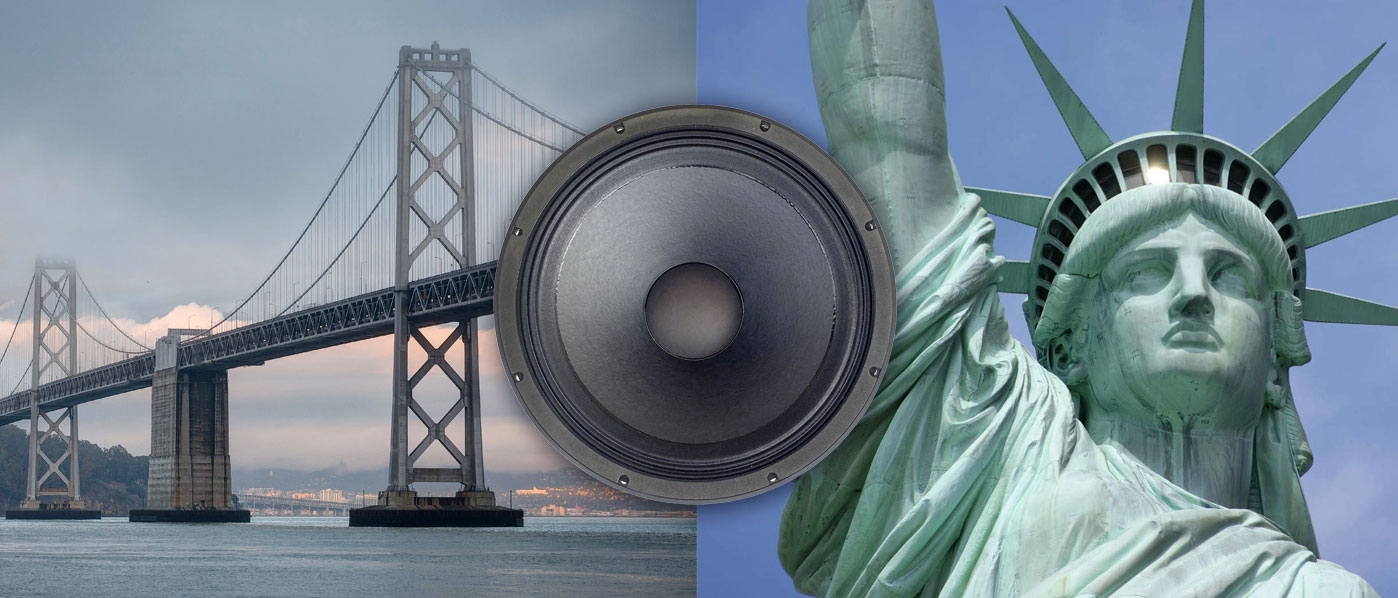
n the 60s and 70s loudspeaker sound came to be characterized by geographic location.
JBL, out of Los Angeles, became known as offering the “West Coast” sound while a group of Boston speaker companies, principally Acoustic Research, offered the competing “East Coast” sound.
Acoustic Research Historian Tom Tyson explains the downward sloping in-room response of the AR-3 which was a very popular and positively reviewed speaker of the time:
“The on-axis output and sensitivity were often sacrificed in favor of better off-axis response. I think it was a conscious decision (fathered by AR founder Edgar Villchur with the AR-3). The AR-3a, for example, used a hard-dome tweeter that was fairly low in sensitivity, but it had superior dispersion for the time, easily the widest dispersion of any tweeter available back then. AR’s philosophy was smooth and extended acoustic-power, and their reverberant-chamber response curves validated (to them) the importance of better off-axis response, even at the expense of on-axis smoothness, since it was felt that most listening would be well back in the listening room beyond the first-arrival sound”.
Extensive anechoic and in-room measurements of the AR-3a were presented in the following AES Journal paper written by AR engineers:
Allison, Roy F.; Berkovitz, Robert “The Sound Field in Home Listening Rooms” JAES Volume 20 Issue 6 pp. 459-469; August 1972.
Chapter 18 of the 3rd edition of Dr. Floyd Toole’s book: “Sound Reproduction – The Acoustics and Psychoacoustics of Loudspeakers and Rooms” is titled “50 Years of Progress in Loudspeaker Design.” Chapter 18 shows anechoic response curves for speakers from the 60s to the 80s via on-axis along with 30 and 60 degrees off-axis plots, many for the first time. Both domestic and professional monitors are shown. What Dr. Toole shows is what he got access to at the NRC (National Research Council) of Canada’s anechoic chamber. Most were submitted by Canadian audio magazines of the day. For those who had an Advent or Dynaco A-25 as your first speakers, you will find the anechoic measurements in the Toole text. Frankly speaking, the results show that you did not lose anything when you got rid of them.
The West Coast sound is also well represented and documented in the book’s anechoic data and described by Dr. Toole. Of the JBL 4310 and L100 Century loudspeakers, Toole writes that they exhibited “a collection of strong resonances that were audible, but seemingly ignored or admired by many”.
The anechoic response for the AR-3 (1958) and AR-3a (1967 redesign) in the Toole text not only shows the downward sloped response, correlating the work of Roy Allison and Robert Berkovitz but also reveals diffraction problems from the lip on the front that holds the grille cloth along with issues from the simple cut-and-dry crossover.
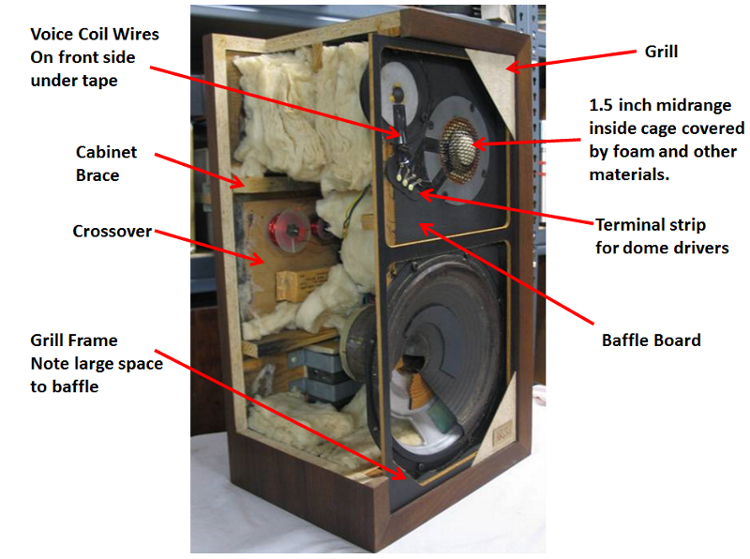
The Californian team took advantage of the replacement parts for the 50s – 70s line still being produced in Japan. They updated the woofer and midrange drivers using parts with changes in materials, magnetics and adhesives advances that did not degrade with time. The tweeter was all-new with increased efficiency and power handling. The anechoic roll-off was gone. A new 3rd order crossover also prevented tweeter failure due to excessive levels.
The AR-303 speakers were vertically aligned as symmetrical matched pairs. The exploded view is shown in the figure below:
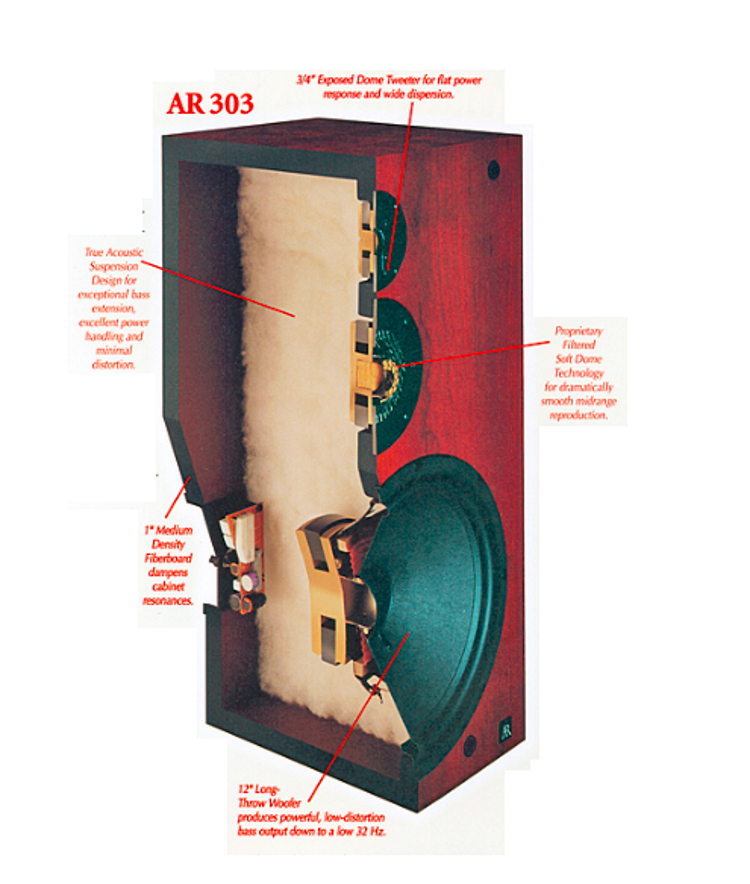
The speakers were designed by AR alum Ken Kantor who was now at NHT along with his engineer Bill Bush. At NHT the state of the art 3.3 tower speaker appeared at about the same time. AR’s new owner had co-located the brand with NHT.
For those interested in all things AR the www.classicspeakerpages.net is the place to go and features a section on Ken Kantor discussing the design goals and the methods he used to realize those goals. That section can be found here.
I am not going to repeat this here for a speaker which went out of production in the late 1990s. Do not try to look up a pair of vintage AR-303 on eBay since the production was small. Most of what I saw online looked damaged or wildly overpriced.
The fact that the project to make new AR products, which were inspired by the originals, started in the early 90s, the founders of AR were still available to provide input as Ken Kantor explains:
“I read public and private engineering definitions of the original products, talked extensively to Vilchur, some to (Henry) Kloss, and other early employees and followers. Measured a great deal, then jumped in”.
My own quasi-anechoic nearfield measurements of the AR-302 are found on the Classic Speaker Page site.
The AR-302 is the redesign of the AR-5. The AR-302 is almost identical to AR-303 except for the smaller 10-inch woofer. The smaller woofer displays less directionality at the crossover to the midrange.

The transformation for this speaker came from the availability of the personal computer in the 90s and a whole series of CAD tools for the PC. These tools modeled the speakers, the resulting change in the speaker’s response when the drivers were placed in the box and synthesized a crossover to achieve the design targets. A quote from Ken Kantor on the Classic Speaker Site explains the process.
“We kept the essentials of the woofer and midrange. In other cases, like the crossover and tweeter, we decided that we could get closer to the intent of the 3a, et al, by taking a more modern route”.
“I don’t think about (crossover) circuit complexity, per se, unless there are tight cost constraints. In a design like the 303, all the attention goes to the acoustical response. I need half a dB less at 3 kHz, but move the main lobe down 15 degrees. A computer spits out a new circuit in a matter of seconds, and it is what it is”.
“In the old days, there was a lot of trial and error in designing a crossover. So, adding more than a few components was futile, since it wasn’t practically possible to optimize them. Simplicity yielded better optimizations”.
“The individual crossover components usually don’t have functions in a way that can be isolated. A crossover is a filter network that implements a transfer function as a result of all of its parts. Sometimes it is possible to generalize and say, Oh, this resistor adds damping. Or, This network compensates for a resonance. But, really, the better a crossover design is, the more the parts work together, symbiotically”.
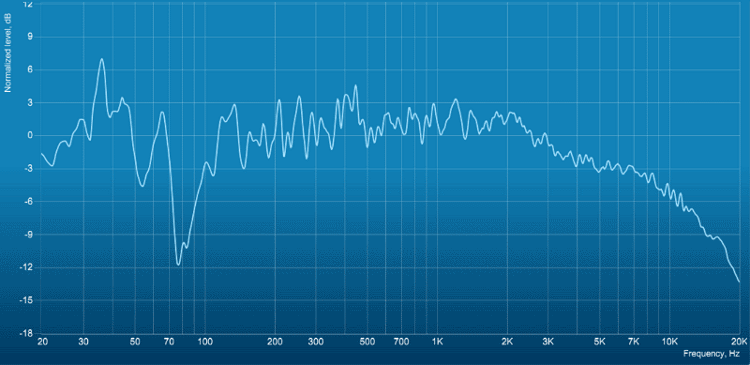
My in-room response of the AR-302 looks reminiscent of an average of in-room responses of the AR-3A at 22 locations in 8 living rooms shown in figure 16 in the AES paper by Allison and Berkovitz cited above.
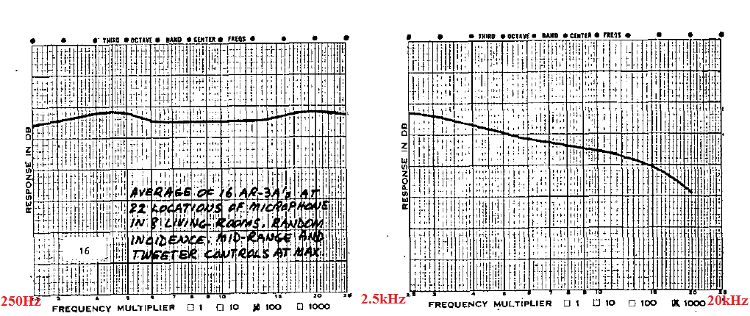

Why the market at the time did not respond favorably to the AR-302 and AR-303 speakers is unclear. Perhaps it was the bookshelf design at first, which required very tall stands to achieve the best sound, but tower versions were sold a couple of years into production. These are likely the best of them and extremely rare.
The height was optimized for the optimal performance for the averaged seated listener. The increased box size extended the bass.
Again I am not trying to send you to eBay. New speakers are available that exceed the performance of the AR-303 series. What I am trying to show is the transformation that was made possible with modern CAD tools and driver production technology.
In 1991 Dr. Floyd Toole moved from the NRC in Canada to become a VP at Harman International. As part of his job as a corporate officer Dr. Toole built a new research group that subsequently produced a number of AES papers. JBL design engineers took the recommendations from this research group and in 1998 produced the JBL LSR32, JBL’s design teams also used a number of new materials and advanced CAD tools in the development of the LSR32.
The figure below is the exploded view.
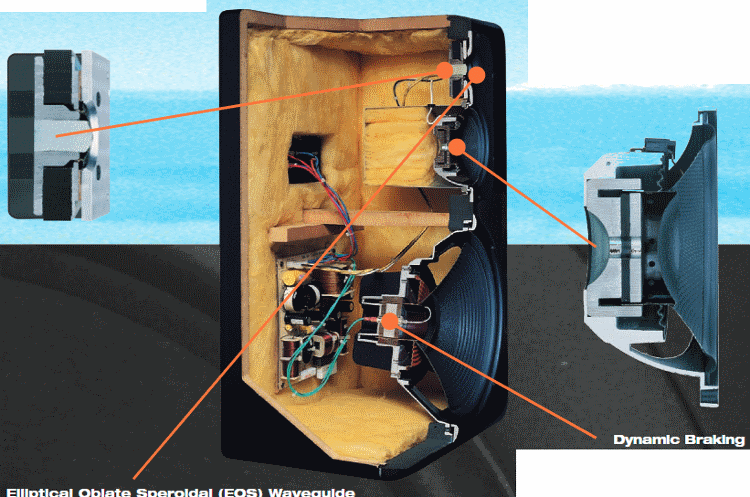
Later a cosmetic change resulted in a model number change called the LSR6332. This speaker continued to sell until a couple of years ago when JBL Pro ended the production of passive speakers (2017). It was good enough to be used as one of the references in the Harman listening labs.
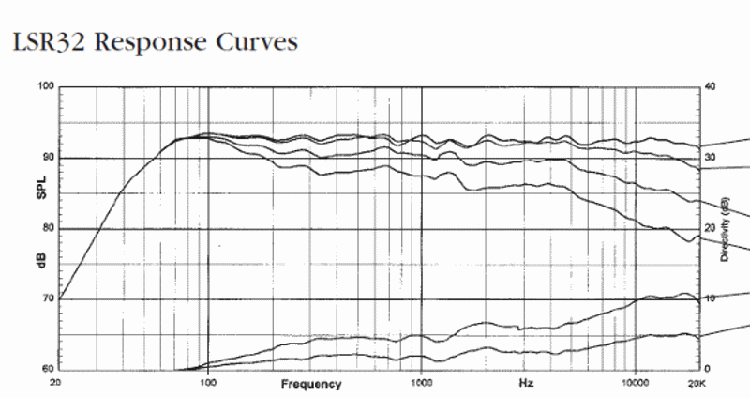
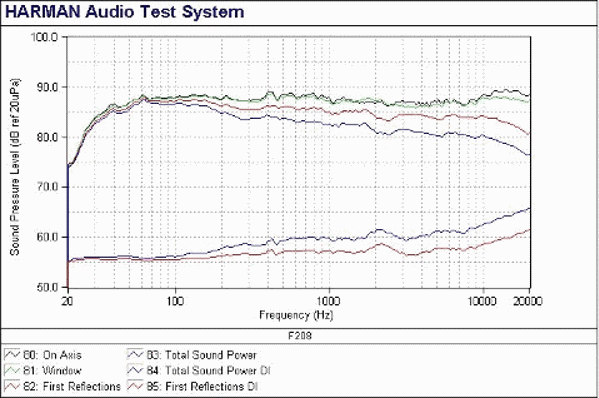
The start of this movement towards accurate loudspeaker sound reproduction in the 1990s should be considered a golden age of speaker evolution. New CAD tools, modern materials, and production techniques made the 90s the golden decade of speaker design. It was the designs by engineers at AR, NHT, Energy, PSB and Snell that ultimately brought it about. Progress has been made in the 2nd decade of the 21st century in passive speaker design but the best speakers of the early and mid-90s were closer than one would have expected. Now the future is in DSP based active speakers.
“AR’s philosophy was smooth and extended acoustic-power, and their reverberant-chamber response curves validated (to them) the importance of better off-axis response, even at the expense of on-axis smoothness, since it was felt that most listening would be well back in the listening room beyond the first-arrival sound.
Diffraction, lobbing and interference effects, of the AR-2 – AR-5, are less noticeable and less audible as one gets back into the reverberant sound field. If a microphone is placed at one meter in front of a speaker with these issues, and a chart recording is made and then compared to another recording with the mike placed in a different location, etc., it can be seen that there are nulls and voids which tend to cancel and are averaged-out in the reverberant field. I think that Toole and Olive and others tend to dictate quality objectives based on listening within a listening room with seating closer to the speakers for “localization,” and so forth. Note the location of the listening positions in the specialized room used by Toole. This would not be considered a “normal” listening position for many listeners, more of an audiophile-type setup that would favor more directional speakers (IMO) than those with a wide acoustic-power response”.
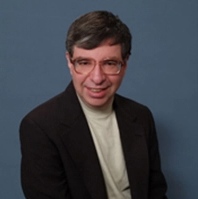
Senior Editor